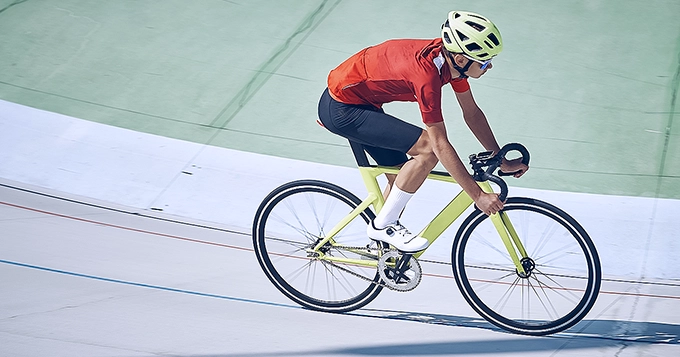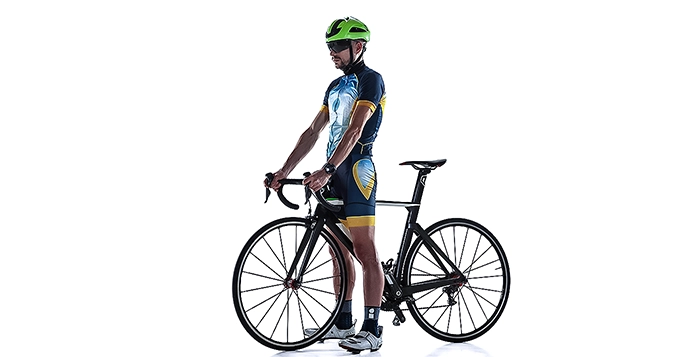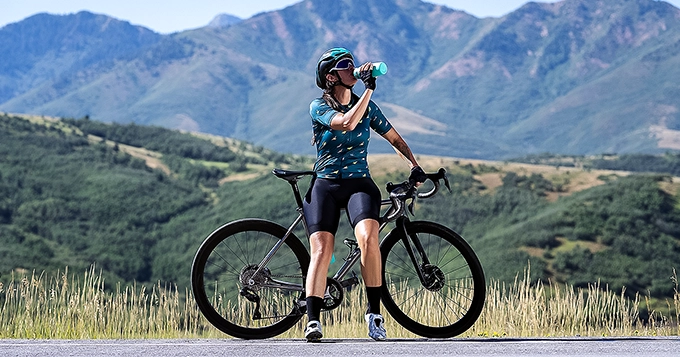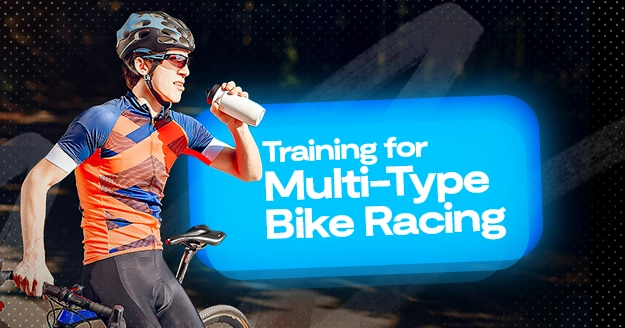Multi-type bike racing is like a cycling sampler platter, offering a taste of everything from high-speed road races to gritty off-road adventures. It is a thrilling journey where you switch gears between different terrains and challenges, making every race a unique and exciting experience.
Understanding Multi-Type Bike Racing
Before starting most journeys, it is necessary to check the map for you to know how to train for a bike race. It will enable you to plan and get ready for any unexpected changes. Building a training plan for multi-type bike racing involves several key considerations to ensure that you are well-prepared for the unique demands of each race.
Consider the following primary points:
-
Specify Training
Each bike race type is unique, so knowing the basics of each discipline helps you choose the right races for your skills and preferences. Concentrating on the abilities and level of fitness required for each kind of race not only lowers your risk of injury but also optimizes your performance, giving you the best opportunity to succeed.
Types of Bike Racing
- Road Cycling Racing – This is a fast-paced sport where cyclists compete on paved roads over various distances and terrains. Racers need a blend of endurance to sustain long rides and bursts of speed for sprints and climbs. They often ride in groups, or pelotons, to save energy by drafting behind one another.
There are different types of races, such as:
- Criteriums or Crits
- Road Races
- Time Trials, and
- Stage races
Strategy and teamwork play crucial roles, with teams working together to protect their leaders and set the pace. Road cycling racing is thrilling because it combines physical stamina, speed, and smart tactics.
- Cyclo-cross Racing – is a thrilling and challenging type of cycling race that takes place on varied terrain, including grass, mud, sand, and even snow. The races are typically held in autumn and winter, adding to the difficulty with often slippery and cold conditions.
Riders use cyclo-cross bikes which resemble road bikes but have wider, knobby tires for better traction and cantilever or disc breaks for improved stopping power in muddy conditions.
Races usually last about an hour and are run on short, looped courses that are 2.5 to 3.5 kilometers long.
- Mountain Bike Racing – This bike race type offers an adrenaline-filled adventure, combining fitness, skill, and a love for the outdoors. It is an exciting off-road sport where cyclists tackle challenging trails filled with rough terrains, hills, rocks, roots, and sometimes jumps.
There are different types of races, including:
- Cross-country (XC)
- Downhill
- Enduro, and;
- XCC
Riders need strong bike handling skills, endurance, strength, and speed to navigate the technical sections and climb steep hills.
- Track Cycling – It is a fast-paced sport that takes place on an oval track called a Velodrome, with steeply banked sides made of wood or concrete. Track bikes are lightweight, have no gears or brakes, and use fixed gears, meaning the pedals move as the wheels move.
There are various race types in this kind, such as:
- Sprints
- Keirin races
- Pursuits
- Points Race, and;
- The Madison
- BMX (Bicycle Motocross) – It is an Olympic sport governed by organizations like the Union Cycliste Internationale (UCI) with a strong community offering competitions at local, national, and international levels for riders of all ages. The tracks, about 300 to 400 meters long, challenge riders with a variety of obstacles that require quick acceleration, precise handling, and strong leg and core muscles.
Races start from a high gate and are usually completed within 30 to 40 seconds, with riders competing in heats called “motos” and the fastest progressing to finals.
- Cycle Speedway – This type of bike racing is short, usually lasting about 60 to 70 seconds, and consists of multiple heats in which riders compete head-to-head. A standard match involves four riders racing four laps around the track. Points are given out according to finishing positions, and the team or rider with the highest total at the end of all heats wins.
-
Identify your Goal
Knowing your goal is an important step in designing an effective bike race training plan. Start by defining your objectives, whether they are specific race goals or broader fitness aspirations. Then, break down your goals into smaller, manageable milestones, considering different areas like physical and technical skills.
Additionally, to keep yourself motivated and on track during your training adventure, don’t forget to consistently review and modify your goals.
-
Assess Your Fitness Level
It is essential to assess your fitness level before starting your training journey to identify which areas need improvement. Begin by evaluating different aspects of your fitness, including endurance, speed, and flexibility. This could involve simple tests like seeing how far you can ride comfortably or how many push-ups you can do.
You should also assess your skills and technique on the bike, such as your ability to handle different terrains and obstacles. Additionally, consider factors like your overall health, any past injuries, and your mental readiness for training.
-
Identify Training Phases
Breaking down your training plan into different stages, each with a specific focus and purpose is essential. These phases will help you organize your training and progress systematically toward your goals.
Base Phase – is where you build a strong foundation of fitness and endurance through consistent, steady workouts.
Build Phase – is where you increase the intensity and focus on specific skills or aspects of fitness, like strength or speed.
Peak Phase – is where you fine-tune your performance in the upcoming race.
Recovery Phase – is when you give your body a chance to relax and heal to avoid overtraining and encourage adaptation.
Allocate specific time frames for each training phase by considering factors such as your race schedule, fitness level, and individual needs. For instance, you may dedicate four weeks to the base phase and six weeks to the build phase. The duration of each phase will vary depending on your goals and the time remaining until your desired race.
-
Plan Workouts
Planning workouts involves designing specific exercises and activities for each phase of training, akin to creating a roadmap for your training journey. During the Base Phase, focus on building endurance with long, steady rides and basic strength exercises. In the Build Phase, increase intensity with interval training, hill repeats, and workouts tailored to improve specific race skills.
For the Peak Phase, fine-tune performance with race simulations and tapering workouts to ensure readiness for peak performance on race day. Finally, during the Recovery Phase, prioritize low-intensity workouts, flexibility exercises, and active recovery to allow your body time to rest and recuperate from training demands.
-
Cross-Training
Cross-training is an essential component of a well-rounded training plan. It involves adding a variety of workouts and activities to your regimen to enhance your cycling training. Think of it as adding diversity to your workouts to improve overall fitness and prevent burnout.
Activities such as running, swimming, or other sports like soccer or basketball can be included. These activities help develop different muscle groups, improve cardiovascular fitness, and enhance flexibility and agility, all of which can benefit your cycling performance.
-
Monitor Progress
Observe your progress by keeping a journal of your progress. Start by setting specific metrics or benchmarks to measure your progress toward your goals. This could include things like tracking your mileage, recording your times in training rides, or monitoring your heart rate during workouts.
Check your progress against your objectives regularly to determine whether you are on track and whether your training schedule needs to be adjusted. Pay attention to any indications of exhaustion, overtraining, or injury by listening to your body. And lastly, be flexible and willing to make changes to your plan as needed to ensure continuous progress and prevent setbacks.
-
Equipment and Gear
These play a crucial role in multi-type bike racing, ensuring you are prepared for the diverse demands of different races. It is like having the right tools for the job.
Make sure that your bike is properly maintained and suitable for the type of racing you will be doing, as different races warrant a specific type of bike. In addition, consider your clothing and protective gear. Wear moisture-wicking clothing that’s comfortable and breathable, and consider layering for changing weather conditions.
Also, invest in a quality helmet that meets safety standards, and consider additional protective gear like gloves, knee and elbow pads, and even body armor for more aggressive forms of racing.
-
Race Preparation and Strategy
Planning your moves before a big game is a vital aspect of your training plan as it gives you the best chance of success. Start by establishing a consistent pre-race routine that includes physical warm-up exercises, mental preparations, and ensuring that you have all the necessary equipment and gear.
When it comes to race strategy, it is important to be flexible and adaptable to changing race conditions. Consider factors like the course terrain, weather conditions, and the strengths and weaknesses of your competitors. Practice different race scenarios to develop your tactical awareness and decision-making skills. Finally, keep a positive mindset and focus on doing your best rather than getting caught up in the outcome.
-
Nutrition and Hydration
Fuel your body for a peak performance, much like you would fuel a car before a long ride. What you eat before a bike race are key components of your training to make sure that you have the energy to perform at your best.
Make sure your diet is well-balanced and full of a range of nutrient-dense foods, including fruits, vegetables, lean proteins, complex carbs, and healthy fats. To keep your energy levels stable, try to consume frequent meals and snacks throughout the day. On the day of the race, focus on your carbohydrates and lean proteins and avoid eating at least an hour before the event.
Hydration is equally important, especially during long or intense training sessions and races. To replace lost fluids and minerals, drink plenty of water and think about using sports drinks or electrolyte solutions.








